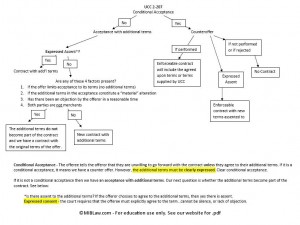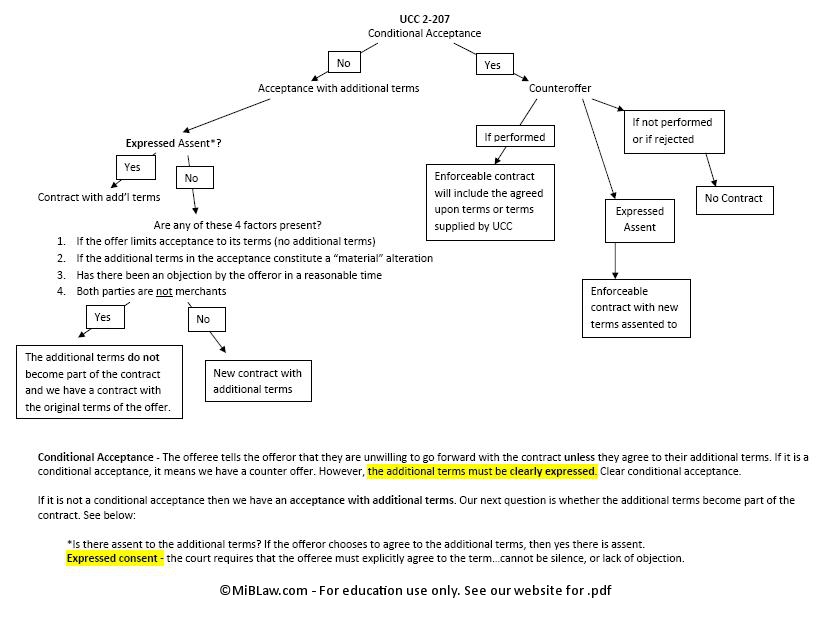Download a .pdf version of the UCC 2-207 flowchart
When it is not exactly clear what parties agreed upon but it is clear that the parties intended to agree, a court must determine what terms apply. If various forms have been sent back and forth between the parties common law only gives us two options to apply to the forms: Offer and Acceptance or Counteroffer. The Uniform Commercial Code (UCC) gives us a third option: acceptance with additional terms.

This option can be found in the UCC 2-207. The goal of 2-207 is to determine which terms apply from the contract negotiation; however, the language of the section can be very confusing and hard to follow. This UCC 2-207 flowchart should be helpful in navigating this section of the UCC.
Download a .pdf version of the UCC 2-207 flowchart
For an example of the Battle of the Forms in action see Brown Machine, Inc. v. Hercules, Inc.


